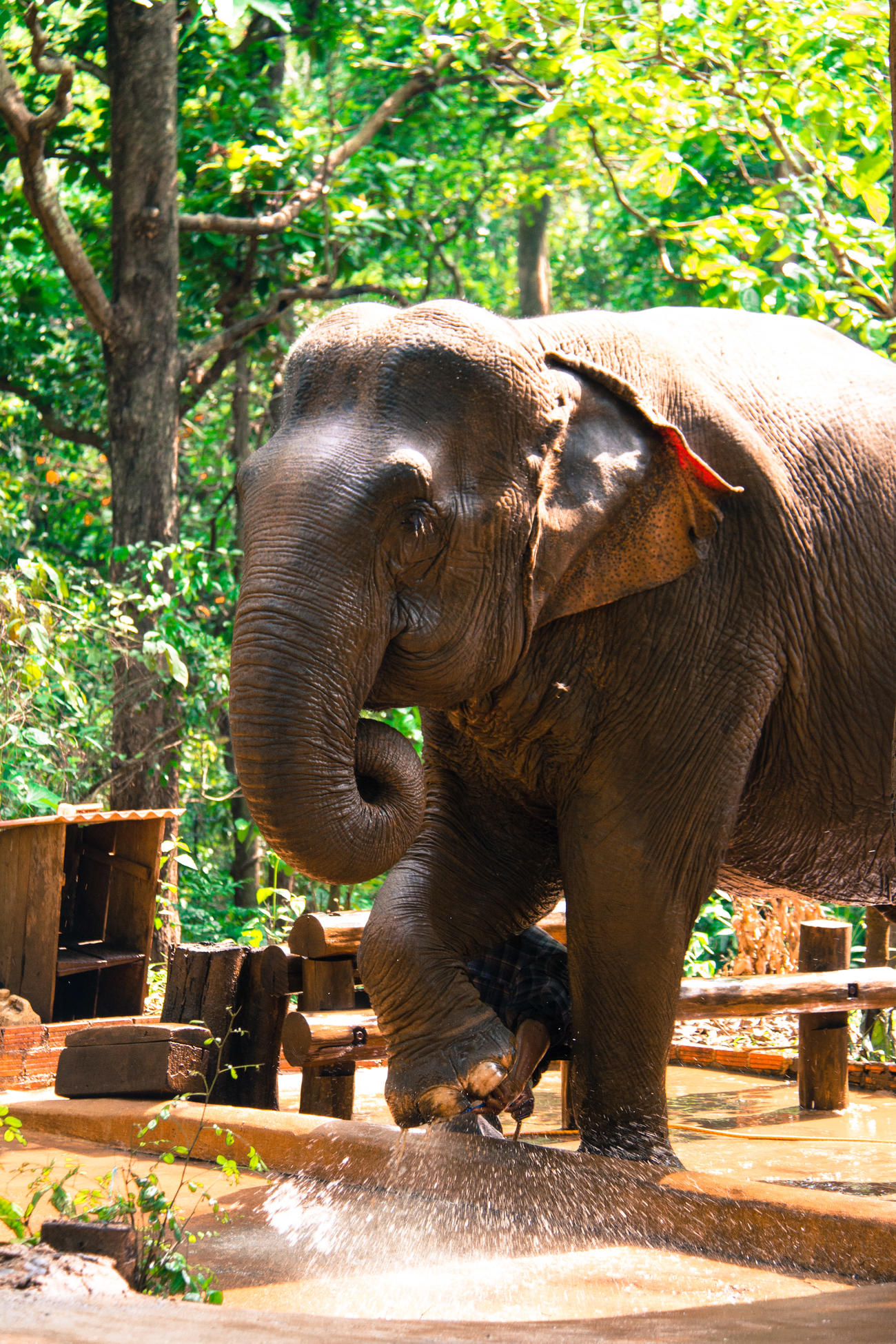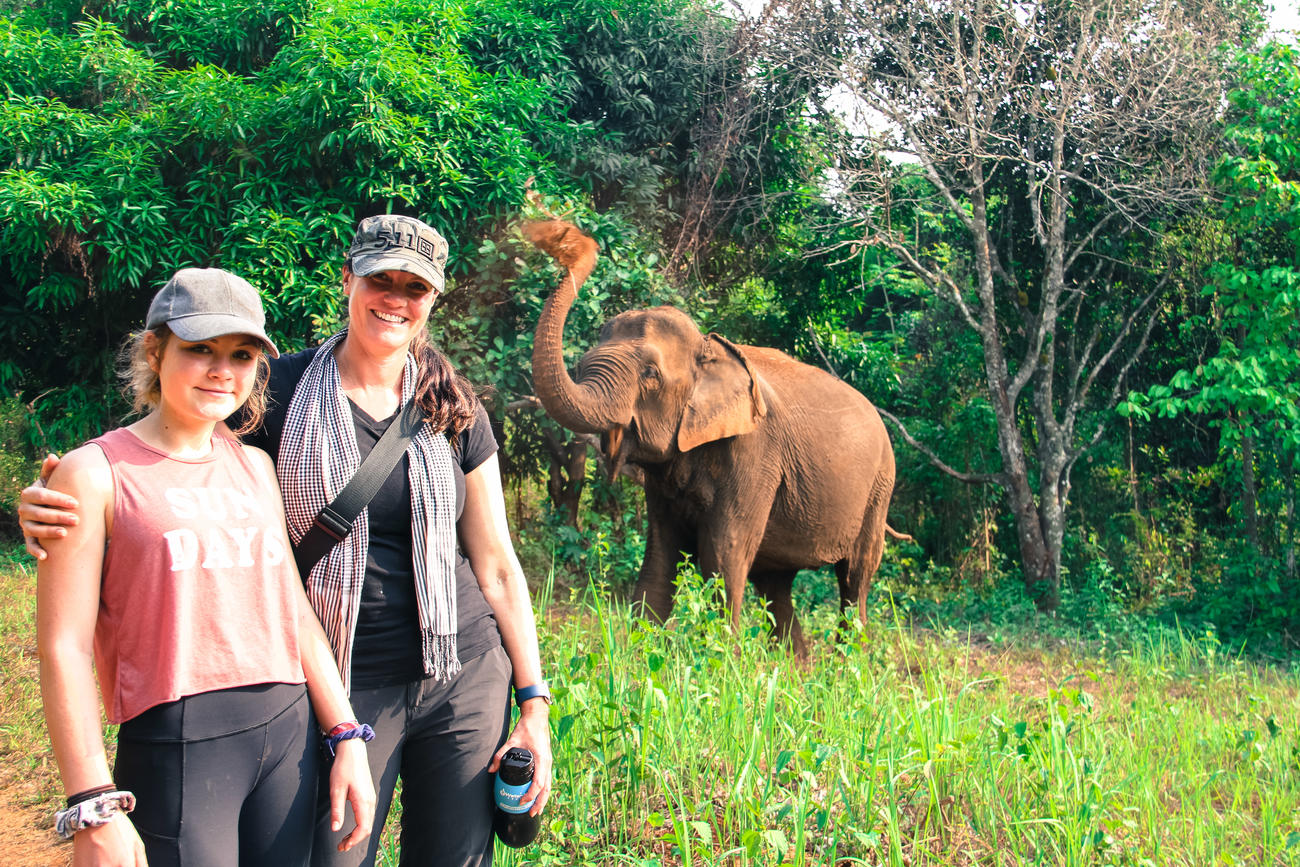It seems apropos that as the Disney remake of “Dumbo” tops the U.S. box office charts, I stand in a Cambodian jungle watching another famous elephant soak her callused and abscessed feet in salt water.
While Sambo’s story of survival might not be quite as fantastic as Dumbo’s, it is symbolic of the struggle that Cambodia has faced over the past 40 plus years.
Sambo never flew, but she did serve as a school bus…
Asian elephants typically live into their mid-50s, and Sambo is getting close to that age, meaning she, like other Cambodians of her generation, lived through the Khmer Rouge era.
Sambo’s owner originally had six elephants, but when Cambodia fell to the Khmer Rouge he was forced to hand them over for the “collective good.” The regime managed to work five of those elephants to death, leaving just Sambo perilously alive.

After the war, her owner heard that she had survived and struck out to find her. Tethered to a mountain, Sambo was weak and hungry, but alive, and she returned to Phnom Penh along with thousands of others in an effort to rebuild a broken country.
Originally Sambo helped with fieldwork and other odd jobs, but one day, when the local school bus broke down, her owner loaded kids onto her back and she set off for school.
I should stop here and say that Sambo’s owner was a good man, and he wanted what was best for his family and his elephant.
While we in the West might scoff at turning an elephant into a school bus, a tourist attraction, or a means to earn a living, we do that from our high-rise apartment or comfy three-bedroom home. Rebuilding after the Khmer Rouge was a grueling task, and everyone involved has worn down feet, including Sambo.
While Sambo was serving as a school bus on the streets of Phnom Penh, foreign aid and embassy workers were returning to the city, and these foreigners enjoyed seeing an elephant in their exotic new home. They brought Sambo treats and presents, and Sambo’s owner realized that she had earning potential. Cue the flying elephant…
For years Sambo walked up and down the Riverwalk in Phnom Penh or around the base of Wat Phnom, and tourists could pay to feed her bananas or to ride her around.
I first saw Sambo there during my early years in Phnom Penh, and then again later when the kids and I visited together, and both times I remember thinking that the big city was no place for an elephant.

Of course my kids were fascinated seeing an elephant in the middle of a city, and I’m proud to say their pleas to ride Sambo fell on deaf ears – even then I knew that walking an elephant on concrete all day couldn’t be a good thing – but I have a fuzzy recollection of giving her bananas and stroking her trunk.
These were the days before we knew better; when tourists everywhere balanced on sedan chairs high above elephants’ heads. It was what you did, and at the time tourists hadn’t yet realized the awful effects this has on the elephants’ backs. But again, Sambo persevered.
And today, thanks to the Elephant Valley Project elephant sanctuary, Sambo no longer calls the big city home. In her retirement at the Elephant Valley Project, Sambo and her mahout are living happily in the jungle of Mondulkiri, Cambodia. She gets Epsom salt foot soaks daily because of the abscesses in her feet from years walking on concrete, but she also gets to forage through the jungle with her elephant friend Ruby and enjoy seeing tourists… but now at a respectful distance.
I haven’t seen the new “Dumbo” movie yet, but I remember my heartbreaking sadness after watching the original animated film – watching Dumbo being separated from his mother, living in captivity, being bullied and forced to fly. But ultimately, it is a story of redemption and survival, much like the story of Sambo… and of Cambodia itself.
